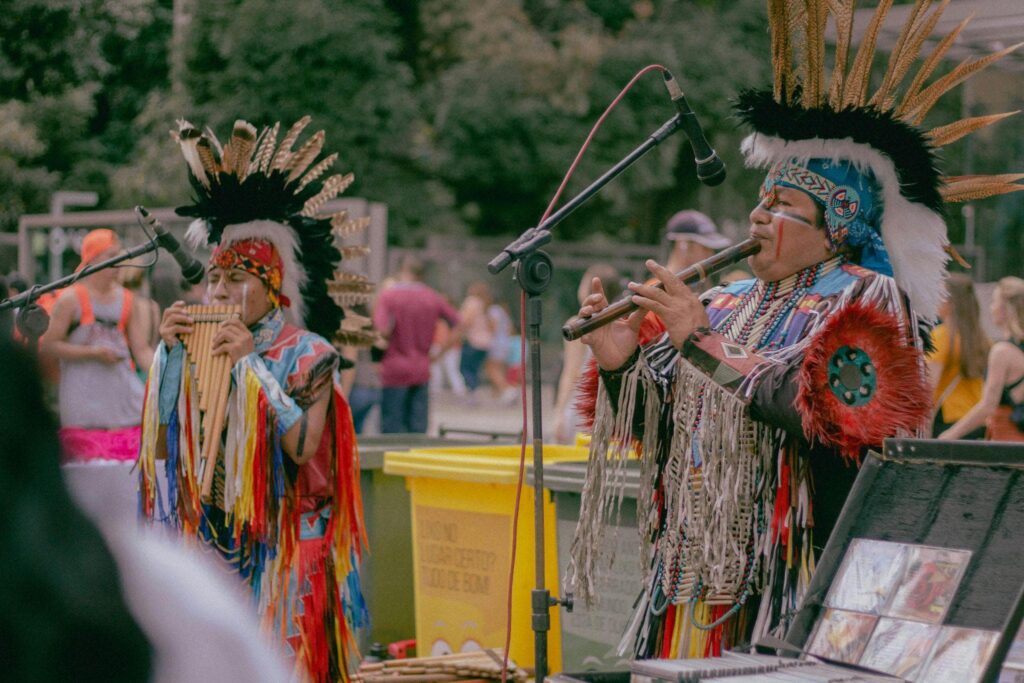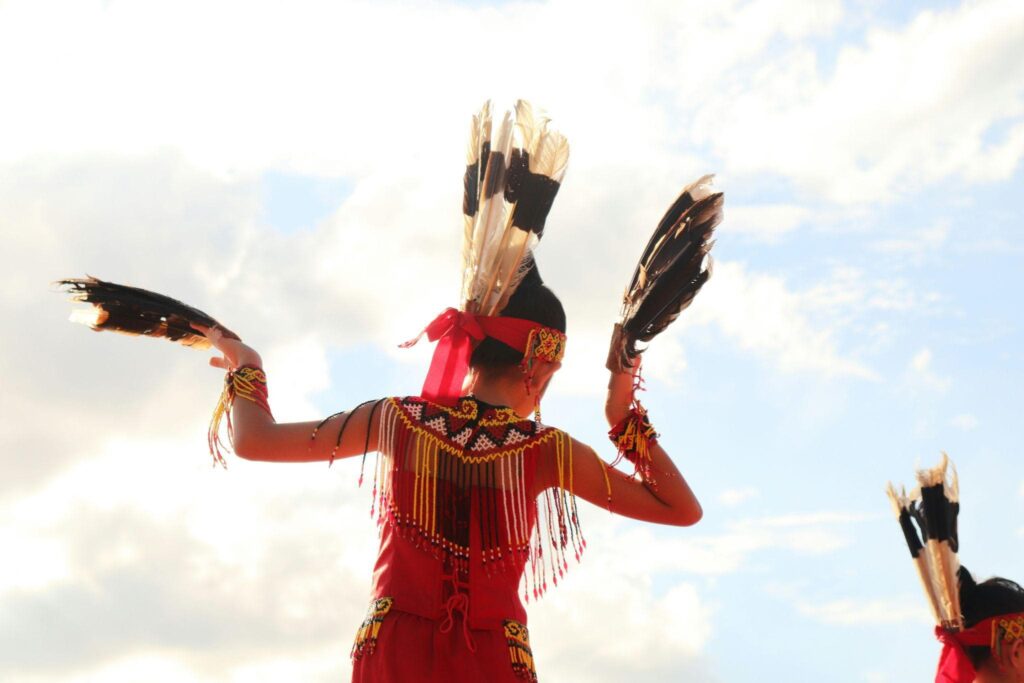When most of us hear the term “tribal casino,” our minds might immediately conjure images of glittering slot machines, bustling poker tables, and the vibrant, often overwhelming glow of neon lights. It’s a common, if somewhat superficial, perception. These establishments are indeed significant entertainment venues, attracting millions of visitors annually. But to view them solely through this lens is to miss a profound and transformative story unfolding within Native American communities across the United States. Tribal gaming, far from being merely about entertainment, represents a powerful and unique legal and socio-economic context rooted in tribal sovereignty. It has become an indispensable, self-determined source of funding, meticulously channeled into robust Native American cultural preservation efforts. This isn’t just about maintaining traditions; it’s about actively rebuilding and revitalizing cultures that have endured centuries of immense pressure and systemic challenges. While the world of gaming can be incredibly diverse, encompassing everything from high-stakes poker to the growing interest in roulette for arab players in different global contexts, the purpose behind tribal gaming revenues for Native American tribes transcends mere profit. It’s deeply intertwined with the very survival and flourishing of their unique heritage. Let’s delve deeper into how these enterprises are financing a powerful resurgence of language, education, and sacred traditions, ensuring that the heartbeat of ancient cultures continues to echo strongly into the future.

The Genesis of Tribal Gaming: A Path to Self-Sufficiency
To truly grasp the significance of tribal gaming’s role in cultural preservation, we must first understand its origins. The narrative of Native American tribes in the United States has, for centuries, been characterized by forced assimilation, land dispossession, and economic disenfranchisement. For too long, many tribes faced immense poverty and dependence on often insufficient federal funding, which rarely prioritized their specific cultural needs. However, a turning point emerged through the assertion of tribal sovereignty – the inherent right of Native American tribes to govern themselves, a status recognized by the U.S. Constitution, treaties, statutes, and court decisions. This inherent self-governance laid the groundwork for tribes to explore economic avenues on their lands, free from state interference, as sovereign nations.
The legal landscape underwent a significant shift with the passage of the landmark Indian Gaming Regulatory Act (IGRA) of 1988. This federal legislation was not a handout but a recognition and regulation of tribes’ pre-existing right to conduct gaming activities on their reservations. IGRA’s primary purpose was threefold: to promote tribal economic development, to protect gaming from organized crime, and to ensure that tribes were the primary beneficiaries of gaming revenue. It mandated that any profits derived from gaming must be used for tribal governmental operations, general welfare of the tribal members, economic development, charitable contributions, or to fund local government agencies. This legislative framework essentially provided tribes with a powerful tool for self-determination. Before IGRA, tribes often struggled to fund basic services, let alone ambitious cultural programs. With gaming revenue, they could pivot from a posture of federal dependency to one of self-sufficiency, wielding their economic power to address their priorities and, crucially, to invest directly in the aspects of their heritage that were most at risk. It marked a profound shift, empowering tribes to become architects of their future rather than just recipients of external aid.

Revitalizing Language: The Heartbeat of a Culture
If culture is the soul of a people, then language is its very heartbeat. For Native American tribes, preserving their indigenous languages is not merely an academic exercise; it is an existential imperative. These languages are intricate vessels of history, identity, traditional knowledge, spiritual beliefs, and unique ways of understanding the world. They carry stories, ceremonies, and scientific observations that have been passed down through countless generations. Tragically, centuries of forced assimilation policies, including the notorious boarding school era, which punished children for speaking their native tongues, pushed many of these vibrant languages to the brink of extinction. Elders often became the last fluent speakers, leaving a desperate race against time.
This is precisely where the financial muscle of tribal gaming has made an astonishing difference. Gaming profits are now directly channeled into robust language revival programs, transforming despair into dynamic resurgence. Imagine a generation of children growing up fluent in their ancestral language, a reality made possible by tribal funds. This funding supports the establishment of language immersion schools where young children learn everything from math to history entirely in their native tongue, a powerful method for achieving fluency. It also finances master-apprentice programs, where younger tribal members are paired with elderly fluent speakers, painstakingly documenting vocabulary, grammar, and oral traditions. Beyond the classroom, gaming revenue is used to develop essential digital language resources – apps, online dictionaries, interactive lessons – making learning accessible to tribal members living anywhere. They’re also funding the creation of printed dictionaries, textbooks, and storybooks, ensuring that the written word can carry the language forward. These initiatives are not just about words; they’re about reclaiming identity, strengthening community bonds, and ensuring that the unique worldview embedded within each language continues to thrive, bridging generations and safeguarding an irreplaceable part of human heritage.
Educating for the Future: Investing in Tribal Youth and Scholarship
Education has always been a beacon of hope and advancement. Within Native American communities, it carries the dual weight of empowering individuals for modern success while simultaneously ensuring the transmission of invaluable cultural values. For too long, educational opportunities for tribal members were limited, often underfunded, and rarely tailored to their distinct cultural contexts. However, the advent of gaming revenues has dramatically altered this landscape, facilitating comprehensive educational programs that span from early childhood to higher learning, all designed with tribal well-being at their core.
Gaming profits are now a powerful engine driving educational upliftment. One of the most direct and impactful uses is the funding of scholarships for tribal members. These scholarships allow promising young people to attend colleges and universities, often alleviating the significant financial burden that might otherwise make higher education inaccessible. This isn’t just about individual success; it’s about building a highly educated and skilled tribal workforce that can return to their communities and contribute to self-governance and economic development. Beyond individual scholarships, tribes are using gaming revenues to establish and sustain their tribal colleges and universities. These institutions are uniquely positioned to offer culturally relevant curricula, integrating indigenous knowledge systems with Western academic disciplines, creating a learning environment where identity is celebrated and reinforced. We’re also seeing funds used to build and adequately staff K-12 schools on reservations, ensuring that tribal children receive a high-quality education without having to leave their communities.
Furthermore, these revenues support the development of cultural curriculum development initiatives, even within mainstream public schools that serve tribal students. This ensures that younger generations connect with their heritage in a formal learning setting, fostering a profound sense of identity and pride. These programs are not just about academics; they are about nurturing well-rounded individuals who are grounded in their cultural heritage yet equipped to navigate and excel in the broader world. It’s a powerful investment in human potential and cultural continuity, forging pathways for youth to thrive by honoring their past while building their future.

Protecting Sacred Traditions: Art, Ceremonies, and Land
Native American cultures are profoundly rich and multifaceted, embodying a tapestry of traditions that extend far beyond spoken language or formal education. They encompass vibrant artistic expressions, significant ceremonial practices, the timeless wisdom embedded in storytelling, and an enduring, sacred connection to ancestral lands. For centuries, these invaluable aspects of heritage faced suppression, disregard, and the corrosive effects of modernization. Yet, with the financial autonomy afforded by tribal gaming, tribes are now actively and meticulously safeguarding and promoting these sacred traditions and cultural practices with unprecedented fervor.
Gaming profits provide the essential resources for a holistic approach to cultural preservation. Consider the vital support for traditional arts. Revenue funds workshops and studios where master artists can teach younger generations the intricate skills of regalia making, pottery, basket weaving, traditional painting, and jewelry crafting. It also supports markets and venues where these authentic artistic expressions can be showcased and sold, empowering artists and preserving their craft. The preservation of ceremonial practices also receives crucial funding. Many traditional gatherings and ceremonies, integral to spiritual and community well-being, require significant resources for travel, supplies, and the support of spiritual leaders. Gaming revenue ensures these vital rituals can continue unbroken. Moreover, tribes are dedicating funds to archaeological and historical preservation, meticulously protecting ancient sites, sacred landscapes, and precious artifacts from degradation, vandalism, or illicit removal. This extends to purchasing back ancestral lands that were lost, ensuring these culturally significant areas remain under tribal stewardship. Finally, the establishment and maintenance of cultural centers and museums are flourishing. These facilities, funded by gaming profits, serve as living repositories for tribal history, artifacts, and knowledge. They not only educate tribal members about their heritage but also serve as powerful platforms to educate the wider public, fostering understanding and respect for Native American cultures. This multi-pronged investment ensures that every thread of the cultural fabric, from the tangible artistry to the most profound spiritual practices, is strengthened and protected for generations to come.
Beyond the Bottom Line: Socio-Cultural Impact and Challenges
The narrative of tribal gaming often focuses on the direct financial benefits, and rightly so, as these profits are undeniably transformative. However, the impact extends far beyond the mere bottom line, rippling through the socio-cultural fabric of Native American communities in profound ways. This newfound economic self-reliance has fostered a palpable sense of community pride and empowered tribes with genuine self-determination. They are no longer solely dependent on external, often paternalistic, government agencies to address their most pressing needs. Instead, tribes can autonomously fund critical social services, improve healthcare facilities, and invest in much-needed infrastructure, directly reflecting their own priorities and cultural values.
This era of economic empowerment has also led to a vibrant resurgence of cultural visibility. Tribal museums, many of which are world-class institutions, are being built and expanded with gaming revenue, serving as beacons of heritage for tribal members and fascinating educational centers for the public. Traditional cultural festivals and community events, which strengthen intergenerational ties and celebrate unique customs, are now robustly funded and more accessible. These gatherings reinforce identity and community cohesion in ways that weren’t possible when resources were scarce. For example, while the world may be familiar with games like roulette for Arab players or slot machines, the tribal gaming industry’s specific impact is fundamentally about reinvestment in heritage rather than just entertainment.
Of course, it would be disingenuous to present tribal gaming as a panacea without acknowledging the inherent challenges and complexities it can introduce. Rapid wealth generation can sometimes lead to social issues within communities, such as an increase in problem gambling among tribal members or concerns about the equitable distribution of gaming revenues, leading to economic disparities within the tribe. These are legitimate concerns that tribes actively work to address through robust regulatory frameworks, community programs, and internal discussions. There are also ongoing debates about the balance between economic development and the preservation of traditional ways of life. However, despite these complexities and the occasional growing pains associated with such significant economic transformation, the overwhelming consensus within Native American communities is that the net impact on cultural revitalization, self-governance, and overall community well-being has been overwhelmingly positive. The ability to chart their course, to heal from historical trauma, and to invest directly in the preservation of their unique heritage is an invaluable outcome that far transcends any challenges.

Conclusion
We began by questioning the narrow perception of tribal gaming establishments, which are often viewed merely as flashy entertainment complexes. What we’ve uncovered is a far richer, more impactful reality. Tribal gaming, operating under the unique umbrella of tribal sovereignty, has undeniably become one of the most potent and self-determined economic engines supporting Native American cultural preservation today. From the intricate efforts to breathe new life into endangered languages through immersion schools and digital resources to the profound investments in comprehensive educational programs that foster both academic excellence and cultural identity, the profits from these enterprises are strategically reinvested into the very soul of tribal nations.
Beyond language and formal education, gaming revenues are meticulously channeled into protecting and promoting sacred traditions. This includes:
- Support for Traditional Arts: Funding workshops, studios, and markets for regalia, pottery, weaving, painting, and other cultural crafts.
- Preservation of Ceremonial Practices: Providing resources for traditional gatherings, spiritual leaders, and the maintenance of sacred sites.
- Archaeological and Historical Preservation: Protecting ancient sites, priceless artifacts, and ancestral lands from degradation and ensuring their proper care.
- Cultural Centers and Museums: Supporting the creation and upkeep of facilities that house artifacts, tell tribal stories, and educate both tribal members and the broader public.
These initiatives are not passive acts of preservation; they are dynamic, intergenerational endeavors that ensure the resilience and vitality of cultures that have faced immense historical adversity.
Ultimately, these gaming enterprises are indeed more than just entertainment venues; they are vital tools for tribal self-determination and cultural resilience, empowering Native American nations to reclaim their past, strengthen their present, and secure their future on their terms. While general gaming interests might include things like roulette for arab players or various forms of global entertainment, the unique story of tribal gaming highlights a profound commitment to cultural continuity. It is a testament to the enduring spirit of Native American cultures and the innovative ways tribes are ensuring their unique languages, traditions, and ways of life not only survive but thrive for countless generations to come.